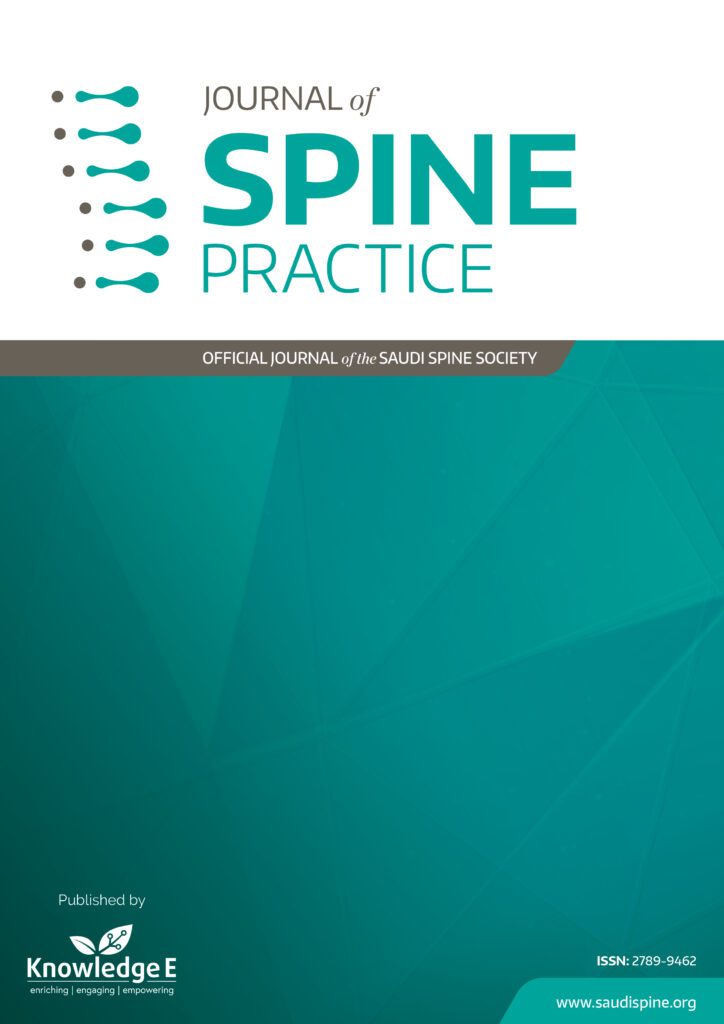
Journal of Spine Practice
ISSN: 2789-9462
Leading research in all spine subspecialties focusing on orthopaedic spine, neurosurgery, radiology, and pain management.
Incidence of Deep Vein Thrombosis in Spine Surgery Patients at a Tertiary Care Hospital
Published date: Nov 07 2021
Journal Title: Journal of Spine Practice
Issue title: Journal of Spine Practice (JSP): Volume 1, Issue 1
Pages: 37
Authors:
Abstract:
Introduction: The prevalence of deep venous thrombosis (DVT) and pulmonary embolisms (PE) has not been established accurately. Reported literature suggests an incidence rate of either DVT or PE ranging from 0.27% to as high as 60% in special cases. We aimed to discern the incidence rate in our local population post spinal surgery.
Methodology: A retrospective chart review was conducted on 892 adult patients who were admitted to our center either electively or in an emergent manner between January 1, 2016 and January 1, 2019 at KAMC, Riyadh. The collected data included information on: demographics, diagnosis, complaint-to-surgery time, type of surgery, location, approach, functional status, days till max function for each patient, blood loss, smoking history, and type of trauma if it was a traumatic case. In addition, DVT/PE status of each patient with their previous or existing health conditions was also included.
Result: Eight hundred patients met our inclusion criteria. Our sample was predominantly male at 422 patients (52.8%) with a mean age of 49.8 ± 18.83 years for both genders. The mean BMI was 28.9 ± 7.03 kg with the average weight being 75.9 ± 18.81 kg. Additionally, 422 (52.8%) participants were cardiac patients and 295 (36.9%) were diabetics. We had 30 (3.8%) instances of either DVT or PE out of the 800 patients, isolated cases of DVT being 18 cases (2.3%). The cervical region was found to be protective against DVT/PE (P = 0.0227). The length of stay was also significant for the development of DVT/PE (P < 0.0001).
Conclusion: Our study is one of the largest conducted in our region, especially in spinal surgical patients. We found that the incidence for DVT/PE (3.8%) was consistent with the lower end of reported literature. We found significance especially in cervical operations being protective against the development of DVT/PE in comparison to other sites. Length of stay was also significant for the development of DVT/PE unlike the length of the operation itself. While we did not observe a significant difference between the prophylactic protocols for the development of DVT/PE in our patients, we had an overall low number of venous thromboembolic events, especially when comparing it to the reported literature.
References: